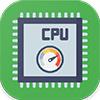 Estimated results for PassMark CPU Mark
Estimated results for PassMark CPU Mark
|
|
Intel Xeon E5-2697 v2
12C 24T @ 2.7 GHz
|
17198
|
|
|
Intel Core i7-8700B
6C 12T @ 3.2 GHz
|
12958
|
 Cinebench R23 (Multi-Core)
Cinebench R23 (Multi-Core)
|
|
Intel Xeon E5-2697 v2
12C 24T @ 2.7 GHz
|
8249
|
|
|
Intel Core i7-8700B
6C 12T @ 3.2 GHz
|
7969
|
 Geekbench 5, 64bit (Multi-Core)
Geekbench 5, 64bit (Multi-Core)
|
|
Intel Xeon E5-2697 v2
12C 24T @ 2.7 GHz
|
7782
|
|
|
Intel Core i7-8700B
6C 12T @ 3.2 GHz
|
5891
|
 Geekbench 6 (Multi-Core)
Geekbench 6 (Multi-Core)
|
|
Intel Core i7-8700B
6C 12T @ 3.2 GHz
|
6027
|
|
|
Intel Xeon E5-2697 v2
12C 24T @ 2.7 GHz
|
5167
|
 Geekbench 6 (Single-Core)
Geekbench 6 (Single-Core)
|
|
Intel Core i7-8700B
6C 12T @ 3.2 GHz
|
1459
|
|
|
Intel Xeon E5-2697 v2
12C 24T @ 2.7 GHz
|
702
|
 Geekbench 5, 64bit (Single-Core)
Geekbench 5, 64bit (Single-Core)
|
|
Intel Core i7-8700B
6C 12T @ 3.2 GHz
|
1172
|
|
|
Intel Xeon E5-2697 v2
12C 24T @ 2.7 GHz
|
762
|
 Cinebench R23 (Single-Core)
Cinebench R23 (Single-Core)
|
|
Intel Core i7-8700B
6C 12T @ 3.2 GHz
|
1146
|
|
|
Intel Xeon E5-2697 v2
12C 24T @ 2.7 GHz
|
651
|

